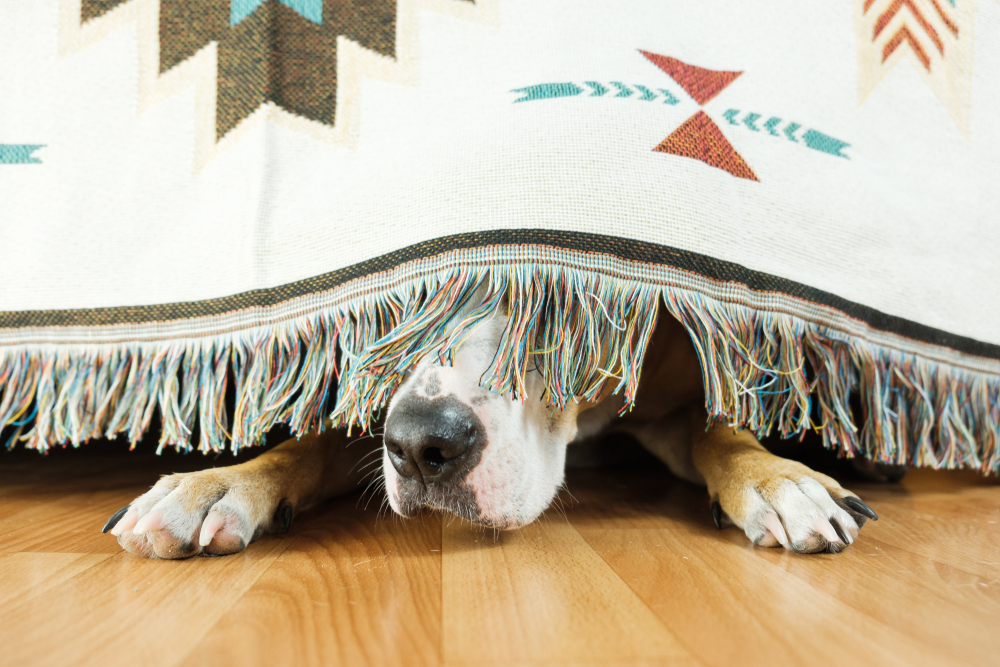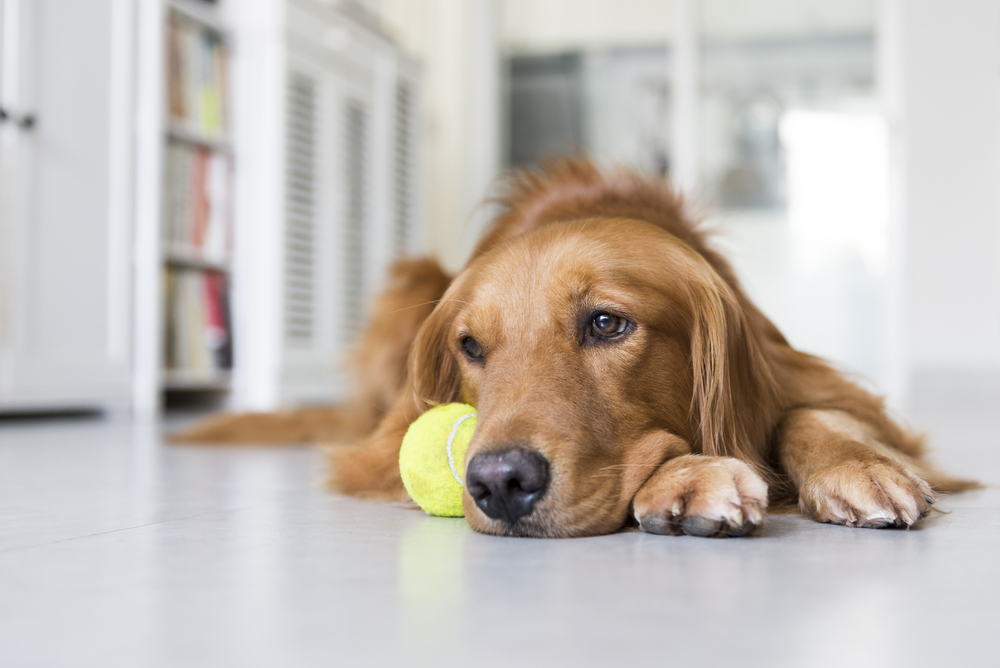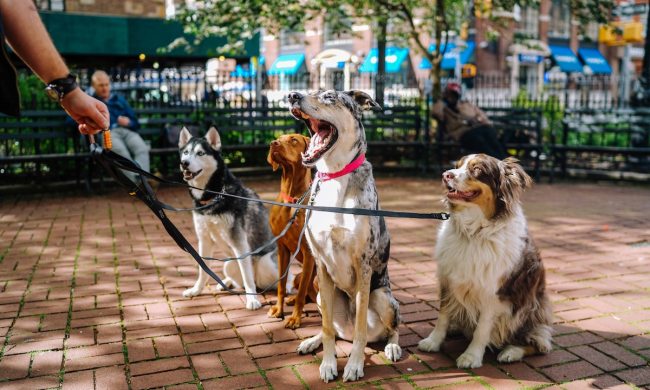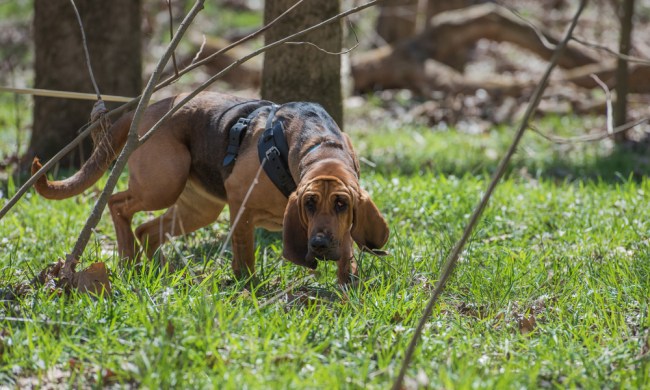Living with a mental disorder is often an isolating experience. Fortunately, it has become more socially acceptable to discuss mental health, and better treatment options are available. But while the stigma surrounding mental illness has lessened its grip, mental health conditions are still prevalent. Roughly 1 in 5 Americans experiences mental health disorders, but mental disorders aren’t limited to humans. Have you ever wondered, “Can dogs have mental disorders?” The answer might surprise you.
In a 2013 study conducted by Emory University, scientists found that the areas of the dog’s brain responsible for emotions are remarkably similar to ours, which means dogs can suffer from anxiety, depression, and obsessive-compulsive disorder, commonly known as OCD. Because our dogs can’t tell us when they’re upset, it’s up to us to recognize the signs. We’ll share the most common mental health issues dogs face, the dog mental illness symptoms you should look out for, how you can help your pooch at home, and when it’s time to contact your veterinarian.
Anxiety
Anxiety is relatively common in dogs, though it takes different forms. Let’s look at the most common forms of anxiety found in dogs.
Age-related anxiety
Dogs experiencing a decline in memory, perception, and awareness may suffer from age-related anxiety, which is often associated with cognitive dysfunction syndrome. The decline resembles Alzheimer’s disease, which is heartbreaking for humans, who can understand what’s happening to them. And it’s all the more confusing for dogs, as they can’t understand what to expect or why it’s happening. Aggression, confusion, destructive behavior, and housebreaking accidents are common.
Fear-related anxiety
Some dogs experience fear-related anxiety, reacting fearfully in response to loud noises like fireworks. Barking excessively, hiding, panting, drooling, and trembling when they hear loud noises are common indicators that your dog suffers from fear-related anxiety.
Separation anxiety
Another type of anxiety frequently found in dogs is separation anxiety. Many dogs enjoy spending time with their owners, but separation anxiety is more pronounced than moping when you go away. Excessive barking, urinating and defecating inside the home, and chewing furniture are all common behaviors in dogs who fear being left home alone.
Depression
If you’ve recently moved or lost a member of the family, you may notice your pup wanting to spend less time playing. He may also become lethargic, experience changes in appetite, or exhibit behavioral changes. Like humans, dogs sometimes withdraw when they’re depressed, spending hours sleeping and hiding away from others.
Obsessive-compulsive disorder (OCD)
Obsessive-compulsive disorder is a complex condition that may resemble anxiety or depression. Simply put, OCD in dogs is an unusual fixation on certain objects. Your dog may dig in the same spot, chew his food bowl, pace excessively, lick themselves (often causing acral lick dermatitis), or repeatedly chase his tail.
Symptoms of mental disorders in dogs
Because they can’t tell us how they feel, diagnosing your pet is risky. Urinating in the home could be a symptom of depression, but your dog could also have a urinary tract infection. If you notice abnormal behavior in your pup, you should consult a veterinarian to determine the cause of the problem. Keep an eye out for the following signs:
Anxiety symptoms:
- Hiding
- Destructive behavior
- Trembling
- Excessive barking
- Diarrhea or vomiting
- Excessive grooming
- Self-harm
- Attempts to escape the home or yard
- Lethargy
Depression symptoms:
- Weight loss
- Loss of appetite
- Lethargy
- Refusal of water
- Sudden changes in behavior
- Avoidance of social interaction
Obsessive-compulsive disorder symptoms:
- Self-harm
- Excessive tail chasing
- Excessive grooming
- Unusual, repetitive behavior
- Avoidance of social interaction
Because many of these symptoms are attributed to more than one mental health disorder, it’s best to let your vet diagnose your dog’s symptoms. They can rule out physical causes and recommend treatment options that can put your dog back on the path to wellness.
Treating mental health problems in dogs
Once your dog has been properly diagnosed, you’ll be able to help him start to feel better. Ensure your pup eats a nutrient-rich diet, has access to plenty of clean water, and gets an adequate amount of exercise for his size and health limitations. A sedentary lifestyle is often a contributing factor to mental health conditions in dogs.
It’s natural to worry about your dog when he’s experiencing mental health issues, but you should also take precautions. Giving him too much attention may cause anxiety, so let your dog set the tone. Try not to smother him with affection when he wants to spend time on his own. Similarly, allow his likes and dislikes to lead you. If your dog chews on your shoes, get him a few high-quality toys he’ll enjoy chewing.
Take your pup to the vet for frequent checkups. Not only is it good for your dog’s physical health, but you’ll also be able to keep your vet updated about any behavioral changes your dog exhibits. When in doubt, consult a professional dog trainer for help. They can help you choose the best methods for correcting your dog’s behavior without worsening the problem.

Dogs are part of the family, and it’s our duty as pet parents to know the symptoms of mental health issues like depression, anxiety, and OCD in dogs. When you know what to look out for, you’re better able to know when it’s time for a trip to the vet. The sooner your pup begins treatment, the sooner he’ll return to health and happiness.





